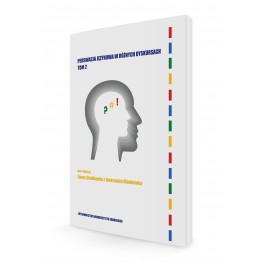Opis
Contrasting Cognates in Modern Languages from a Diachronic Perspective
Autor: Mikołaj Rychło
Wydawnictwo Uniwersytetu Gdańskiego
The book presents a convincing attempt at combining contrastive analysis as applied to modern languages with a diachronic approach. The author analyses collected Polish-English cognates, referring to their Proto-Germanic and Proto-Slavic forms, and goes on to explain their relationship at the level of Proto-Indo–European. He investigates their similarities and disparities thoroughly, while illuminating the phonological, morphological and semantic processes that occurred in the development of the languages under comparison or in their prehistories.
Dr Mikolaj Rychlo has elaborated convincing methodological criteria for researching Polish-English cognates, which he skilfully develops, discussing not only evident and probable cases, but also controversial and difficult ones. The work under review is innovative both for methodological reasons and also by virtue of the author’s approach to the issue of a Polish-English linguistic affinity. I recommend the study as being a major scientific contribution to the fields of contrastive and diachronic research.
prof. dr hab. Krzysztof Tomasz Witczak
Table of contents
Acknowledgements | 8
Abbreviations | 9
Part 1. Introduction | 13
Chapter 1. Aims | 14
Chapter 2. The contribution of the present approach
to contrastive linguistics | 15
Chapter 3. The cognates | 17
Chapter 4. A common ancestor | 23
4.1. The time, place and diversification of Proto-Indo-European | 23
4.2. Implications for current research | 32
Part 2. The methodology of collecting Polish-English cognates | 39
Chapter 5. The principle of continuity: Attestation | 40
Chapter 6. The Slavic, Germanic and Indo-European background | 46
Chapter 7. The phonological connection | 50
Chapter 8. The morphological connection | 61
8.1. Exact cognates sensu stricto | 63
8.2. Exact cognates sensu lato | 71
8.3. Derivatives versus reflexes of the base | 81
8.4. Cognates descended from alternant word-forms | 89
Chapter 9. The semantic connection | 95
Part 3. Putting methodology into practice | 109
Chapter 10. Cognates versus independent derivatives | 110
Chapter 11. Cognates versus loanwords | 128
Chapter 12. Other causes of similarity: Chance and onomatopoeia | 139
Part 4. Conclusion: Inherited elements in Polish and English,
the potential for further research | 149
References | 153
Indices | 165











Opinie
Na razie nie ma opinii o produkcie.